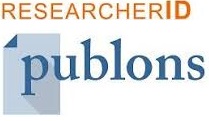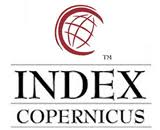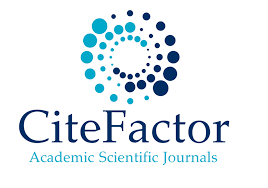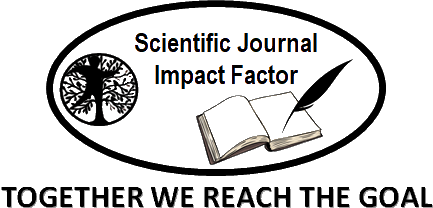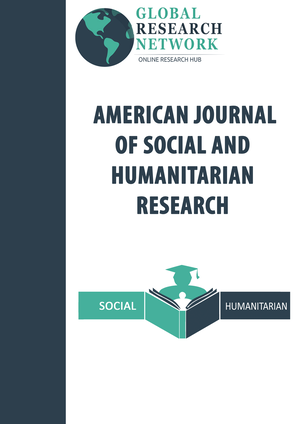Exploring Non-Alcoholic Fatty Liver Disease: From Genetics To Emerging Therapies
Abstract
Non-Alcoholic Fatty Liver Disease (NAFLD) is characterized by the reversible accumulation of hepatic lipids without significant inflammation. The rising prevalence of NAFLD across all age groups has been strongly associated with lifestyle-related conditions, such as obesity and type 2 diabetes mellitus. A comprehensive understanding of the diverse pathophysiological mechanisms underlying the onset and progression of NAFLD is crucial for developing targeted interventions. These may include pharmacological therapies designed to inhibit pathways driving hepatic dysregulation and steatosis. Recent advancements have also highlighted the growing importance of non-invasive diagnostic tools utilizing simple biomarkers, which offer ease of application and accessibility. Alongside these tools, ongoing research into novel pharmacotherapies, combined with lifestyle modifications such as diet and exercise, as well as surgical interventions, when necessary, holds promise for improving patient outcomes and quality of life. This review summarizes key diagnostic approaches and management strategies for NAFLD, emphasizing their potential in addressing this global health challenge.
Keywords
Full Text:
PDFReferences
Mavrogiannaki AN, Migdalis IN. Nonalcoholic Fatty Liver Disease, Diabetes Mellitus and Cardiovascular Disease: Newer Data. Int J Endocrinol 2013;2013:1–8.
Milić S. Non-alcoholic fatty liver disease and obesity: Biochemical, metabolic and clinical presentations. World J Gastroenterol 2014;20:9330–7.
Machado MV, Diehl AM. Pathogenesis of Nonalcoholic Steatohepatitis. Gastroenterology 2016;150:1769–77.
Dongiovanni P, Valenti L. Genetics of nonalcoholic fatty liver disease. Metabolism 2016;65:1026–37.
Romeo S, Kozlitina J, Xing C et al. Genetic variation in PNPLA3 confers susceptibility to nonalcoholic fatty liver disease. Nat Genet 2008;40:1461–5.
Sookoian S, Pirola CJ. Meta‐analysis of the influence of I148M variant of patatin‐like phospholipase domain containing 3 gene ( PNPLA3 ) on the susceptibility and histological severity of nonalcoholic fatty liver disease. Hepatology 2011;53:1883–94.
Kozlitina J, Smagris E, Stender S et al. Exome-wide association study identifies a TM6SF2 variant that confers susceptibility to nonalcoholic fatty liver disease. Nat Genet 2014;46:352–6.
Speliotes EK, Yerges-Armstrong LM, Wu J et al. Genome-Wide Association Analysis Identifies Variants Associated with Nonalcoholic Fatty Liver Disease That Have Distinct Effects on Metabolic Traits. McCarthy MI (ed.). PLoS Genet 2011;7:e1001324.
Manolio TA, Collins FS, Cox NJ et al. Finding the missing heritability of complex diseases. Nature 2009;461:747–53.
Edwards SL, Beesley J, French JD et al. Beyond GWASs: Illuminating the Dark Road from Association to Function. Am J Hum Genet 2013;93:779–97.
Meijnikman AS, Herrema H, Scheithauer TPM et al. Evaluating causality of cellular senescence in non-alcoholic fatty liver disease. JHEP Rep 2021;3:100301.
Regulski MJ. Cellular Senescence: What, Why, and How. Wounds Compend Clin Res Pract 2017;29:168–74.
Tchkonia T, Morbeck DE, Von Zglinicki T et al. Fat tissue, aging, and cellular senescence. Aging Cell 2010;9:667–84.
Burton DGA. Cellular senescence, ageing and disease. AGE 2009;31:1–9.
Ferreira-Gonzalez S, Rodrigo-Torres D, Gadd VL et al. Cellular Senescence in Liver Disease and Regeneration. Semin Liver Dis 2021;41:050–66.
Papatheodoridi A, Chrysavgis L, Koutsilieris M et al. The Role of Senescence in the Development of Nonalcoholic Fatty Liver Disease and Progression to Nonalcoholic Steatohepatitis. Hepatology 2020;71:363–74.
Kang T-W, Yevsa T, Woller N et al. Senescence surveillance of pre-malignant hepatocytes limits liver cancer development. Nature 2011;479:547–51.
Chuprin A, Gal H, Biron-Shental T et al. Cell fusion induced by ERVWE1 or measles virus causes cellular senescence. Genes Dev 2013;27:2356–66.
Campisi J, d’Adda Di Fagagna F. Cellular senescence: when bad things happen to good cells. Nat Rev Mol Cell Biol 2007;8:729–40.
Krizhanovsky V, Yon M, Dickins RA et al. Senescence of Activated Stellate Cells Limits Liver Fibrosis. Cell 2008;134:657–67.
Gustafson B, Nerstedt A, Smith U. Reduced subcutaneous adipogenesis in human hypertrophic obesity is linked to senescent precursor cells. Nat Commun 2019;10:2757.
Laish I, Mannasse-Green B, Hadary R et al. Telomere Dysfunction in Nonalcoholic Fatty Liver Disease and Cryptogenic Cirrhosis. Cytogenet Genome Res 2016;150:93–9.
Ping F, Li Z, Lv K et al. Deoxyribonucleic acid telomere length shortening can predict the incidence of non‐alcoholic fatty liver disease in patients with type 2 diabetes mellitus. J Diabetes Investig 2017;8:174–80.
Begriche K, Massart J, Robin M-A et al. Mitochondrial adaptations and dysfunctions in nonalcoholic fatty liver disease. Hepatology 2013;58:1497–507.
Palikaras K, Lionaki E, Tavernarakis N. Balancing mitochondrial biogenesis and mitophagy to maintain energy metabolism homeostasis. Cell Death Differ 2015;22:1399–401.
Nolfi-Donegan D, Braganza A, Shiva S. Mitochondrial electron transport chain: Oxidative phosphorylation, oxidant production, and methods of measurement. Redox Biol 2020;37:101674.
Li S, Tan H-Y, Wang N et al. The Role of Oxidative Stress and Antioxidants in Liver Diseases. Int J Mol Sci 2015;16:26087–124.
Sunny NE, Parks EJ, Browning JD et al. Excessive Hepatic Mitochondrial TCA Cycle and Gluconeogenesis in Humans with Nonalcoholic Fatty Liver Disease. Cell Metab 2011;14:804–10.
Walter P, Paetkau V, Lardy HA. Paths of Carbon in Gluconeogenesis and Lipogenesis. J Biol Chem 1966;241:2523–32.
Koliaki C, Szendroedi J, Kaul K et al. Adaptation of Hepatic Mitochondrial Function in Humans with Non-Alcoholic Fatty Liver Is Lost in Steatohepatitis. Cell Metab 2015;21:739–46.
Serviddio G, Bellanti F, Tamborra R et al. Uncoupling protein-2 (UCP2) induces mitochondrial proton leak and increases susceptibility of non-alcoholic steatohepatitis (NASH) liver to ischaemia-reperfusion injury. Gut 2008;57:957–65.
Ucar F, Sezer S, Erdogan S et al. The relationship between oxidative stress and nonalcoholic fatty liver disease: Its effects on the development of nonalcoholic steatohepatitis. Redox Rep 2013;18:127–33.
Xu M-X, Ge C-X, Qin Y-T et al. Prolonged PM2.5 exposure elevates risk of oxidative stress-driven nonalcoholic fatty liver disease by triggering increase of dyslipidemia. Free Radic Biol Med 2019;130:542–56.
Bulua AC, Simon A, Maddipati R et al. Mitochondrial reactive oxygen species promote production of proinflammatory cytokines and are elevated in TNFR1-associated periodic syndrome (TRAPS). J Exp Med 2011;208:519–33.
Pirola CJ, Scian R, Gianotti TF et al. Epigenetic Modifications in the Biology of Nonalcoholic Fatty Liver Disease: The Role of DNA Hydroxymethylation and TET Proteins. Medicine (Baltimore) 2015;94:e1480.
Shami GJ, Cheng D, Verhaegh P et al. Three-dimensional ultrastructure of giant mitochondria in human non-alcoholic fatty liver disease. Sci Rep 2021;11:3319.
Wang L, Liu X, Nie J et al. ALCAT1 controls mitochondrial etiology of fatty liver diseases, linking defective mitophagy to steatosis. Hepatology 2015;61:486–96.
Twig G, Elorza A, Molina AJA et al. Fission and selective fusion govern mitochondrial segregation and elimination by autophagy. EMBO J 2008;27:433–46.
Sánchez-Alcázar JA, Schneider E, Martı́nez MA et al. Tumor Necrosis Factor-α Increases the Steady-state Reduction of Cytochrome b of the Mitochondrial Respiratory Chain in Metabolically Inhibited L929 Cells. J Biol Chem 2000;275:13353–61.
Sławińska N, Krupa R. Molecular Aspects of Senescence and Organismal Ageing—DNA Damage Response, Telomeres, Inflammation and Chromatin. Int J Mol Sci 2021;22:590.
Hurst S, Hoek J, Sheu S-S. Mitochondrial Ca2+ and regulation of the permeability transition pore. J Bioenerg Biomembr 2017;49:27–47.
Acierno C, Caturano A, Pafundi PC et al. Nonalcoholic fatty liver disease and type 2 diabetes: pathophysiological mechanisms shared between the two faces of the same coin. Explor Med 2020;1, DOI: 10.37349/emed.2020.00019.
Sinha A, Bankura B. Prevalence of nonalcoholic fatty liver disease in type 2 diabetes mellitus patients from the Eastern region of India. Diabetes Epidemiol Manag 2023;12:100161.
Lomonaco R, Godinez Leiva E, Bril F et al. Advanced Liver Fibrosis Is Common in Patients With Type 2 Diabetes Followed in the Outpatient Setting: The Need for Systematic Screening. Diabetes Care 2021;44:399–406.
Yang JD, Ahmed F, Mara KC et al. Diabetes Is Associated With Increased Risk of Hepatocellular Carcinoma in Patients With Cirrhosis From Nonalcoholic Fatty Liver Disease. Hepatology 2020;71:907–16.
Younossi ZM, Golabi P, De Avila L et al. The global epidemiology of NAFLD and NASH in patients with type 2 diabetes: A systematic review and meta-analysis. J Hepatol 2019;71:793–801.
Mantovani A, Byrne CD, Bonora E et al. Nonalcoholic Fatty Liver Disease and Risk of Incident Type 2 Diabetes: A Meta-analysis. Diabetes Care 2018;41:372–82.
Sung K-C, Kim SH. Interrelationship between Fatty Liver and Insulin Resistance in the Development of Type 2 Diabetes. J Clin Endocrinol Metab 2011;96:1093–7.
Smith RL, Soeters MR, Wüst RCI et al. Metabolic Flexibility as an Adaptation to Energy Resources and Requirements in Health and Disease. Endocr Rev 2018;39:489–517.
Donnelly KL, Smith CI, Schwarzenberg SJ et al. Sources of fatty acids stored in liver and secreted via lipoproteins in patients with nonalcoholic fatty liver disease. J Clin Invest 2005;115:1343–51.
Bugianesi E, McCullough AJ, Marchesini G. Insulin resistance: A metabolic pathway to chronic liver disease. Hepatology 2005;42:987–1000.
Ducluzeau P-H, Perretti N, Laville M et al. Regulation by Insulin of Gene Expression in Human Skeletal Muscle and Adipose Tissue. Diabetes 2001;50:1134–42.
Horton JD, Goldstein JL, Brown MS. SREBPs: activators of the complete program of cholesterol and fatty acid synthesis in the liver. J Clin Invest 2002;109:1125–31.
Tabor DE, Kim JB, Spiegelman BM et al. Identification of Conserved cis-Elements and Transcription Factors Required for Sterol-regulated Transcription of Stearoyl-CoA Desaturase 1 and 2. J Biol Chem 1999;274:20603–10.
Caspar-Bauguil S, Cousin B, Galinier A et al. Adipose tissues as an ancestral immune organ: Site‐specific change in obesity. FEBS Lett 2005;579:3487–92.
Havel PJ. Update on Adipocyte Hormones. Diabetes 2004;53:S143–51.
Xu A, Wang Y, Keshaw H et al. The fat-derived hormone adiponectin alleviates alcoholic and nonalcoholic fatty liver diseases in mice. J Clin Invest 2003;112:91–100.
Angulo P. NAFLD, Obesity, and Bariatric Surgery. Gastroenterology 2006;130:1848–52.
Maeda N, Shimomura I, Kishida K et al. Diet-induced insulin resistance in mice lacking adiponectin/ACRP30. Nat Med 2002;8:731–7.
Waxman DJ, Celenza JL. Sexual dimorphism of hepatic gene expression: novel biological role of KRAB zinc finger repressors revealed: Figure 1. Genes Dev 2003;17:2607–13.
Grossmann M, Wierman ME, Angus P et al. Reproductive Endocrinology of Nonalcoholic Fatty Liver Disease. Endocr Rev 2019;40:417–46.
Lonardo A, Nascimbeni F, Ballestri S et al. Sex Differences in Nonalcoholic Fatty Liver Disease: State of the Art and Identification of Research Gaps. Hepatology 2019;70:1457–69.
Kojima S, Watanabe N, Numata M et al. Increase in the prevalence of fatty liver in Japan over the past 12 years: analysis of clinical background. J Gastroenterol 2003;38:954–61.
JSG-NAFLD, Eguchi Y, Hyogo H et al. Prevalence and associated metabolic factors of nonalcoholic fatty liver disease in the general population from 2009 to 2010 in Japan: a multicenter large retrospective study. J Gastroenterol 2012;47:586–95.
Jia Y, Yee JK, Wang C et al. Testosterone protects high-fat/low-carbohydrate diet-induced nonalcoholic fatty liver disease in castrated male rats mainly via modulating endoplasmic reticulum stress. Am J Physiol-Endocrinol Metab 2018;314:E366–76.
Lin H-Y, Yu I-C, Wang R-S et al. Increased hepatic steatosis and insulin resistance in mice lacking hepatic androgen receptor. Hepatology 2008;47:1924–35.
Jaruvongvanich V, Sanguankeo A, Riangwiwat T et al. Testosterone, Sex Hormone-Binding Globulin and Nonalcoholic Fatty Liver Disease: a Systematic Review and Meta-Analysis. Ann Hepatol 2017;16:382–94.
Wang X, Lu Y, Wang E et al. Hepatic estrogen receptor α improves hepatosteatosis through upregulation of small heterodimer partner. J Hepatol 2015;63:183–90.
Zhang Z-C, Liu Y, Xiao L-L et al. Upregulation of miR-125b by estrogen protects against non-alcoholic fatty liver in female mice. J Hepatol 2015;63:1466–75.
Bryzgalova G, Gao H, Ahren B et al. Evidence that oestrogen receptor-α plays an important role in the regulation of glucose homeostasis in mice: insulin sensitivity in the liver. Diabetologia 2006;49:588–97.
Brunt EM, Kleiner DE, Carpenter DH et al. NAFLD: Reporting Histologic Findings in Clinical Practice. Hepatology 2021;73:2028–38.
Nalbantoglu ILK, Brunt EM. Role of liver biopsy in nonalcoholic fatty liver disease. World J Gastroenterol 2014;20:9026–37.
Chalasani N, Younossi Z, Lavine JE et al. The diagnosis and management of nonalcoholic fatty liver disease: Practice guidance from the American Association for the Study of Liver Diseases. Hepatology 2018;67:328–57.
Shah RA, Kowdley KV. Serum ferritin as a biomarker for NAFLD: ready for prime time? Hepatol Int 2019;13:110–2.
Gaidos JKJ, Hillner BE, Sanyal AJ. A decision analysis study of the value of a liver biopsy in nonalcoholic steatohepatitis. Liver Int 2008;28:650–8.
Larson AM, Chan GC, Wartelle CF et al. Infection complicating percutaneous liver biopsy in liver transplant recipients. Hepatology 1997;26:1406–9.
Samiatina-Morkūnienė D, Silickytė R, Jankauskaitė G. Hemothorax Caused by Liver Biopsy – Rare Iatrogenic Complication. Liet Chir 2023;22:245–8.
van Beek D, Funaki B. Hemorrhage as a complication of percutaneous liver biopsy. Semin Interv Radiol 2013;30:413–6.
Tsai E, Lee T-P. Diagnosis and Evaluation of Nonalcoholic Fatty Liver Disease/Nonalcoholic Steatohepatitis, Including Noninvasive Biomarkers and Transient Elastography. Clin Liver Dis 2018;22:73–92.
Zhang J-Z, Cai J-J, Yu Y et al. Nonalcoholic Fatty Liver Disease: An Update on the Diagnosis. Gene Expr 2019;19:187–98.
Li G, Zhang X, Lin H et al. Non-invasive tests of non-alcoholic fatty liver disease. Chin Med J (Engl) 2022;135:532–46.
Poynard T, Ratziu V, Naveau S et al. The diagnostic value of biomarkers (SteatoTest) for the prediction of liver steatosis. Comp Hepatol 2005;4:10.
Poynard T, Peta V, Munteanu M et al. The diagnostic performance of a simplified blood test (SteatoTest-2) for the prediction of liver steatosis. Eur J Gastroenterol Hepatol 2019;31:393–402.
Poynard T, Paradis V, Mullaert J et al. Prospective external validation of a new non‐invasive test for the diagnosis of non‐alcoholic steatohepatitis in patients with type 2 diabetes. Aliment Pharmacol Ther 2021;54:952–66.
Kotronen A, Peltonen M, Hakkarainen A et al. Prediction of Non-Alcoholic Fatty Liver Disease and Liver Fat Using Metabolic and Genetic Factors. Gastroenterology 2009;137:865–72.
Lee J-H, Kim D, Kim HJ et al. Hepatic steatosis index: A simple screening tool reflecting nonalcoholic fatty liver disease. Dig Liver Dis 2010;42:503–8.
Yip TC ‐F., Ma AJ, Wong VW ‐S. et al. Laboratory parameter‐based machine learning model for excluding non‐alcoholic fatty liver disease ( NAFLD ) in the general population. Aliment Pharmacol Ther 2017;46:447–56.
Bedogni G, Bellentani S, Miglioli L et al. The Fatty Liver Index: a simple and accurate predictor of hepatic steatosis in the general population. BMC Gastroenterol 2006;6:33.
Gastaldelli A, Kozakova M, Højlund K et al. Fatty liver is associated with insulin resistance, risk of coronary heart disease, and early atherosclerosis in a large European population. Hepatol Baltim Md 2009;49:1537–44.
Xia C, Li R, Zhang S et al. Lipid accumulation product is a powerful index for recognizing insulin resistance in non-diabetic individuals. Eur J Clin Nutr 2012;66:1035–8.
Kahn HS. The “lipid accumulation product” performs better than the body mass index for recognizing cardiovascular risk: a population-based comparison. BMC Cardiovasc Disord 2005;5:26.
Dai H, Wang W, Chen R et al. Lipid accumulation product is a powerful tool to predict non-alcoholic fatty liver disease in Chinese adults. Nutr Metab 2017;14:49.
Alonso C, Fernández-Ramos D, Varela-Rey M et al. Metabolomic Identification of Subtypes of Nonalcoholic Steatohepatitis. Gastroenterology 2017;152:1449-1461.e7.
Mayo R, Crespo J, Martínez-Arranz I et al. Metabolomic-based noninvasive serum test to diagnose nonalcoholic steatohepatitis: Results from discovery and validation cohorts. Hepatol Commun 2018;2:807–20.
Zhou Y-J, Zhou Y-F, Zheng J-N et al. NAFL screening score: A basic score identifying ultrasound-diagnosed non-alcoholic fatty liver. Clin Chim Acta 2017;475:44–50.
Sirota JC, McFann K, Targher G et al. Elevated serum uric acid levels are associated with non-alcoholic fatty liver disease independently of metabolic syndrome features in the United States: Liver ultrasound data from the National Health and Nutrition Examination Survey. Metabolism 2013;62:392–9.
Utzschneider KM, Kahn SE. The Role of Insulin Resistance in Nonalcoholic Fatty Liver Disease. J Clin Endocrinol Metab 2006;91:4753–61.
Samuel VT, Liu Z-X, Qu X et al. Mechanism of Hepatic Insulin Resistance in Non-alcoholic Fatty Liver Disease. J Biol Chem 2004;279:32345–53.
Hamaguchi M, Kojima T, Itoh Y et al. The Severity of Ultrasonographic Findings in Nonalcoholic Fatty Liver Disease Reflects the Metabolic Syndrome and Visceral Fat Accumulation. Am J Gastroenterol 2007;102:2708–15.
Hernaez R, Lazo M, Bonekamp S et al. Diagnostic accuracy and reliability of ultrasonography for the detection of fatty liver: a meta-analysis. Hepatol Baltim Md 2011;54:1082–90.
Strauss S, Gavish E, Gottlieb P et al. Interobserver and Intraobserver Variability in the Sonographic Assessment of Fatty Liver. Am J Roentgenol 2007;189:W320–3.
Sasso M, Beaugrand M, De Ledinghen V et al. Controlled Attenuation Parameter (CAP): A Novel VCTETM Guided Ultrasonic Attenuation Measurement for the Evaluation of Hepatic Steatosis: Preliminary Study and Validation in a Cohort of Patients with Chronic Liver Disease from Various Causes. Ultrasound Med Biol 2010;36:1825–35.
Cao Y, Xiang L, Qi F et al. Accuracy of controlled attenuation parameter (CAP) and liver stiffness measurement (LSM) for assessing steatosis and fibrosis in non-alcoholic fatty liver disease: A systematic review and meta-analysis. eClinicalMedicine 2022;51:101547.
De Lédinghen V, Vergniol J, Capdepont M et al. Controlled attenuation parameter (CAP) for the diagnosis of steatosis: A prospective study of 5323 examinations. J Hepatol 2014;60:1026–31.
Van Werven JR, Marsman HA, Nederveen AJ et al. Assessment of Hepatic Steatosis in Patients Undergoing Liver Resection: Comparison of US, CT, T1-weighted Dual-Echo MR Imaging, and Point-resolved1 H MR Spectroscopy. Radiology 2010;256:159–68.
Bray TJ, Chouhan MD, Punwani S et al. Fat fraction mapping using magnetic resonance imaging: insight into pathophysiology. Br J Radiol 2017;91:20170344.
Reeder SB, Cruite I, Hamilton G et al. Quantitative assessment of liver fat with magnetic resonance imaging and spectroscopy. J Magn Reson Imaging 2011;34:729–49.
Runge JH, Smits LP, Verheij J et al. MR Spectroscopy–derived Proton Density Fat Fraction Is Superior to Controlled Attenuation Parameter for Detecting and Grading Hepatic Steatosis. Radiology 2018;286:547–56.
Noureddin M, Lam J, Peterson MR et al. Utility of magnetic resonance imaging versus histology for quantifying changes in liver fat in nonalcoholic fatty liver disease trials. Hepatol Baltim Md 2013;58:1930–40.
Caussy C, Reeder SB, Sirlin CB et al. Noninvasive, Quantitative Assessment of Liver Fat by MRI‐PDFF as an Endpoint in NASH Trials. Hepatology 2018;68:763–72.
Yokoo T, Serai SD, Pirasteh A et al. Linearity, Bias, and Precision of Hepatic Proton Density Fat Fraction Measurements by Using MR Imaging: A Meta-Analysis. Radiology 2018;286:486–98.
Bannas P, Kramer H, Hernando D et al. Quantitative magnetic resonance imaging of hepatic steatosis: Validation in ex vivo human livers. Hepatology 2015;62:1444–55.
Shah PK, Mudaliar S, Chang AR et al. Effects of intensive insulin therapy alone and in combination with pioglitazone on body weight, composition, distribution and liver fat content in patients with type 2 diabetes. Diabetes Obes Metab 2011;13:505–10.
Neuschwander-Tetri BA, Brunt EM, Wehmeier KR et al. Improved nonalcoholic steatohepatitis after 48 weeks of treatment with the PPAR-γ ligand rosiglitazone. Hepatology 2003;38:1008–17.
Smith U. Pioglitazone: mechanism of action. Int J Clin Pract Suppl 2001:13–8.
Lian J, Fu J. Pioglitazone for NAFLD Patients With Prediabetes or Type 2 Diabetes Mellitus: A Meta-Analysis. Front Endocrinol 2021;12:615409.
Promrat K, Lutchman G, Uwaifo GI et al. A pilot study of pioglitazone treatment for nonalcoholic steatohepatitis† ‡. Hepatology 2004;39:188–96.
Aithal GP, Thomas JA, Kaye PV et al. Randomized, Placebo-Controlled Trial of Pioglitazone in Nondiabetic Subjects With Nonalcoholic Steatohepatitis. Gastroenterology 2008;135:1176–84.
Shadid S, Jensen MD. Effect of pioglitazone on biochemical indices of non-alcoholic fatty liver disease in upper body obesity. Clin Gastroenterol Hepatol 2003;1:384–7.
Campbell JE, Drucker DJ. Pharmacology, Physiology, and Mechanisms of Incretin Hormone Action. Cell Metab 2013;17:819–37.
Salvatore T, Nevola R, Pafundi PC et al. Incretin Hormones: The Link between Glycemic Index and Cardiometabolic Diseases. Nutrients 2019;11:1878.
Davies MJ, Aroda VR, Collins BS et al. Management of Hyperglycemia in Type 2 Diabetes, 2022. A Consensus Report by the American Diabetes Association (ADA) and the European Association for the Study of Diabetes (EASD). Diabetes Care 2022;45:2753–86.
Fang Y, Ji L, Zhu C et al. Liraglutide Alleviates Hepatic Steatosis by Activating the TFEB-Regulated Autophagy-Lysosomal Pathway. Front Cell Dev Biol 2020;8:602574.
Sharma S, Mells JE, Fu PP et al. GLP-1 Analogs Reduce Hepatocyte Steatosis and Improve Survival by Enhancing the Unfolded Protein Response and Promoting Macroautophagy. Fimia GM (ed.). PLoS ONE 2011;6:e25269.
Ghosal S, Datta D, Sinha B. A meta-analysis of the effects of glucagon-like-peptide 1 receptor agonist (GLP1-RA) in nonalcoholic fatty liver disease (NAFLD) with type 2 diabetes (T2D). Sci Rep 2021;11:22063.
Frøssing S, Nylander M, Chabanova E et al. Effect of liraglutide on ectopic fat in polycystic ovary syndrome: A randomized clinical trial. Diabetes Obes Metab 2018;20:215–8.
Trujillo JM, Nuffer W, Smith BA. GLP-1 receptor agonists: an updated review of head-to-head clinical studies. Ther Adv Endocrinol Metab 2021;12:2042018821997320.
Pacana T, Sanyal AJ. Vitamin E and nonalcoholic fatty liver disease: Curr Opin Clin Nutr Metab Care 2012;15:641–8.
Wang C-L, Liang L, Fu J-F et al. Effect of lifestyle intervention on non-alcoholic fatty liver disease in Chinese obese children. World J Gastroenterol 2008;14:1598.
Ersöz G, Günşar F, Karasu Z et al. Management of fatty liver disease with vitamin E and C compared to ursodeoxycholic acid treatment. Turk J Gastroenterol Off J Turk Soc Gastroenterol 2005;16:124–8.
Nobili V, Manco M, Devito R et al. Effect of vitamin E on aminotransferase levels and insulin resistance in children with non‐alcoholic fatty liver disease. Aliment Pharmacol Ther 2006;24:1553–61.
Androutsakos T, Nasiri-Ansari N, Bakasis A-D et al. SGLT-2 Inhibitors in NAFLD: Expanding Their Role beyond Diabetes and Cardioprotection. Int J Mol Sci 2022;23:3107.
Chehrehgosha H, Sohrabi MR, Ismail-Beigi F et al. Empagliflozin Improves Liver Steatosis and Fibrosis in Patients with Non-Alcoholic Fatty Liver Disease and Type 2 Diabetes: A Randomized, Double-Blind, Placebo-Controlled Clinical Trial. Diabetes Ther 2021;12:843–61.
Euh W, Lim S, Kim J-W. Sodium-Glucose Cotransporter-2 Inhibitors Ameliorate Liver Enzyme Abnormalities in Korean Patients With Type 2 Diabetes Mellitus and Nonalcoholic Fatty Liver Disease. Front Endocrinol 2021;12:613389.
Shibuya T, Fushimi N, Kawai M et al. Luseogliflozin improves liver fat deposition compared to metformin in type 2 diabetes patients with non‐alcoholic fatty liver disease: A prospective randomized controlled pilot study. Diabetes Obes Metab 2018;20:438–42.
Yoneda M, Honda Y, Ogawa Y et al. Comparing the effects of tofogliflozin and pioglitazone in non-alcoholic fatty liver disease patients with type 2 diabetes mellitus (ToPiND study): a randomized prospective open-label controlled trial. BMJ Open Diabetes Res Care 2021;9:e001990.
Giguère V, Yang N, Segui P et al. Identification of a new class of steroid hormone receptors. Nature 1988;331:91–4.
Friedman SL. Liver fibrosis – from bench to bedside. J Hepatol 2003;38:38–53.
Forman BM, Goode E, Chen J et al. Identification of a nuclear receptor that is activated by farnesol metabolites. Cell 1995;81:687–93.
Insull W. Clinical Utility of Bile Acid Sequestrants in the Treatment of Dyslipidemia: A Scientific Review: South Med J 2006;99:257–73.
Zhang Y, Edwards PA. FXR signaling in metabolic disease. FEBS Lett 2008;582:10–8.
Yang Z-X, Shen W, Sun H. Effects of nuclear receptor FXR on the regulation of liver lipid metabolism in patients with non-alcoholic fatty liver disease. Hepatol Int 2010;4:741–8.
Tonascia J. The Farnesoid X Receptor Ligand Obeticholic Acid in NASH Treatment. 2023:10206968 MB.
Talukdar S, Kharitonenkov A. FGF19 and FGF21: In NASH we trust. Mol Metab 2021;46:101152.
Nies VJM, Sancar G, Liu W et al. Fibroblast Growth Factor Signaling in Metabolic Regulation. Front Endocrinol 2015;6:193.
Itoh N, Ornitz DM. Evolution of the Fgf and Fgfr gene families. Trends Genet 2004;20:563–9.
Struik D, Dommerholt MB, Jonker JW. Fibroblast growth factors in control of lipid metabolism: from biological function to clinical application. Curr Opin Lipidol 2019;30:235–43.
Mummadi RR, Kasturi KS, Chennareddygari S et al. Effect of Bariatric Surgery on Nonalcoholic Fatty Liver Disease: Systematic Review and Meta-Analysis. Clin Gastroenterol Hepatol 2008;6:1396–402.
Burza MA, Romeo S, Kotronen A et al. Long-Term Effect of Bariatric Surgery on Liver Enzymes in the Swedish Obese Subjects (SOS) Study. Targher G (ed.). PLoS ONE 2013;8:e60495.
Dixon J, Bhathal P, O’Brien P. Weight Loss and Non-alcoholic Fatty Liver Disease: Falls In Gamma-Glutamyl Transferase Concentrations are Associated with Histologic Improvement. Obes Surg 2006;16:1278–86.
Clark JM, Alkhuraishi ARA, Solga SF et al. Roux‐en‐Y Gastric Bypass Improves Liver Histology in Patients with Non‐Alcoholic Fatty Liver Disease. Obes Res 2005;13:1180–6.
McTigue KM, Wellman R, Nauman E et al. Comparing the 5-Year Diabetes Outcomes of Sleeve Gastrectomy and Gastric Bypass: The National Patient-Centered Clinical Research Network (PCORNet) Bariatric Study. JAMA Surg 2020;155:e200087.
Pedersen JS, Rygg MO, Serizawa RR et al. Effects of Roux-en-Y Gastric Bypass and Sleeve Gastrectomy on Non-Alcoholic Fatty Liver Disease: A 12-Month Follow-Up Study with Paired Liver Biopsies. J Clin Med 2021;10:3783.
Cummings DE, Overduin J, Foster-Schubert KE. Gastric Bypass for Obesity: Mechanisms of Weight Loss and Diabetes Resolution. J Clin Endocrinol Metab 2004;89:2608–15.
Svane MS, Bojsen-Møller KN, Martinussen C et al. Postprandial Nutrient Handling and Gastrointestinal Hormone Secretion After Roux-en-Y Gastric Bypass vs Sleeve Gastrectomy. Gastroenterology 2019;156:1627-1641.e1.
Patti M, Houten SM, Bianco AC et al. Serum Bile Acids Are Higher in Humans With Prior Gastric Bypass: Potential Contribution to Improved Glucose and Lipid Metabolism. Obesity 2009;17:1671–7.
Alberto González-Regueiro J, Moreno-Castañeda L, Uribe M et al. The Role of Bile Acids in Glucose Metabolism and Their Relation with Diabetes. Ann Hepatol 2017;16:S15–20.
Watanabe M, Houten SM, Wang L et al. Bile acids lower triglyceride levels via a pathway involving FXR, SHP, and SREBP-1c. J Clin Invest 2004;113:1408–18.
Li L, Liu D ‐W., Yan H ‐Y. et al. Obesity is an independent risk factor for non‐alcoholic fatty liver disease: evidence from a meta‐analysis of 21 cohort studies. Obes Rev 2016;17:510–9.
Vilar-Gomez E, Martinez-Perez Y, Calzadilla-Bertot L et al. Weight Loss Through Lifestyle Modification Significantly Reduces Features of Nonalcoholic Steatohepatitis. Gastroenterology 2015;149:367-378.e5.
Neuschwander-Tetri BA. Therapeutic Landscape for NAFLD in 2020. Gastroenterology 2020;158:1984-1998.e3.
Bach-Faig A, Berry EM, Lairon D et al. Mediterranean diet pyramid today. Science and cultural updates. Public Health Nutr 2011;14:2274–84.
Akhlaghi M, Ghasemi-Nasab M, Riasatian M. Mediterranean diet for patients with non-alcoholic fatty liver disease, a systematic review and meta-analysis of observational and clinical investigations. J Diabetes Metab Disord 2020;19:575–84.
Haigh L, Kirk C, El Gendy K et al. The effectiveness and acceptability of Mediterranean diet and calorie restriction in non-alcoholic fatty liver disease (NAFLD): A systematic review and meta-analysis. Clin Nutr 2022;41:1913–31.
Kastorini C-M, Milionis HJ, Esposito K et al. The Effect of Mediterranean Diet on Metabolic Syndrome and its Components. J Am Coll Cardiol 2011;57:1299–313.
Bozzetto L, Prinster A, Annuzzi G et al. Liver Fat Is Reduced by an Isoenergetic MUFA Diet in a Controlled Randomized Study in Type 2 Diabetic Patients. Diabetes Care 2012;35:1429–35.
Parker HM, Johnson NA, Burdon CA et al. Omega-3 supplementation and non-alcoholic fatty liver disease: A systematic review and meta-analysis. J Hepatol 2012;56:944–51.
Lu W, Li S, Li J et al. Effects of Omega-3 Fatty Acid in Nonalcoholic Fatty Liver Disease: A Meta-Analysis. Gastroenterol Res Pract 2016;2016:1–11.
Hashemi A, Vasquez K, Guishard D et al. Implementing DASH-aligned Congregate Meals and Self-Measured Blood Pressure in two senior centers: An open label study. Nutr Metab Cardiovasc Dis 2022;32:1998–2009.
Chen D, Tang J, Gong T et al. Short-term effects of modest salt reduction combined with DASH diet on changing salt eating habits in hypertensive patients with type II diabetes. Clin Exp Hypertens 2022;44:514–22.
Razavi Zade M, Telkabadi MH, Bahmani F et al. The effects of DASH diet on weight loss and metabolic status in adults with non‐alcoholic fatty liver disease: a randomized clinical trial. Liver Int 2016;36:563–71.
Xiao M-L, Lin J-S, Li Y-H et al. Adherence to the Dietary Approaches to Stop Hypertension (DASH) diet is associated with lower presence of non-alcoholic fatty liver disease in middle-aged and elderly adults. Public Health Nutr 2020;23:674–82.
Campbell AP. DASH Eating Plan: An Eating Pattern for Diabetes Management. Diabetes Spectr Publ Am Diabetes Assoc 2017;30:76–81.
Ghorabi S, Salari-Moghaddam A, Daneshzad E et al. Association between the DASH diet and metabolic syndrome components in Iranian adults. Diabetes Metab Syndr Clin Res Rev 2019;13:1699–704.
Shu L, Huang Y-Q, Zhang X-Y et al. Adherence to the Dietary Approaches to Stop Hypertension diet reduces the risk of breast cancer: A systematic review and meta-analysis. Front Nutr 2022;9:1032654.
DOI: http://dx.doi.org/10.52155/ijpsat.v48.1.6823
Refbacks
- There are currently no refbacks.
Copyright (c) 2024 Nidhi Chandran, Otari Chankesliani

This work is licensed under a Creative Commons Attribution 4.0 International License.








